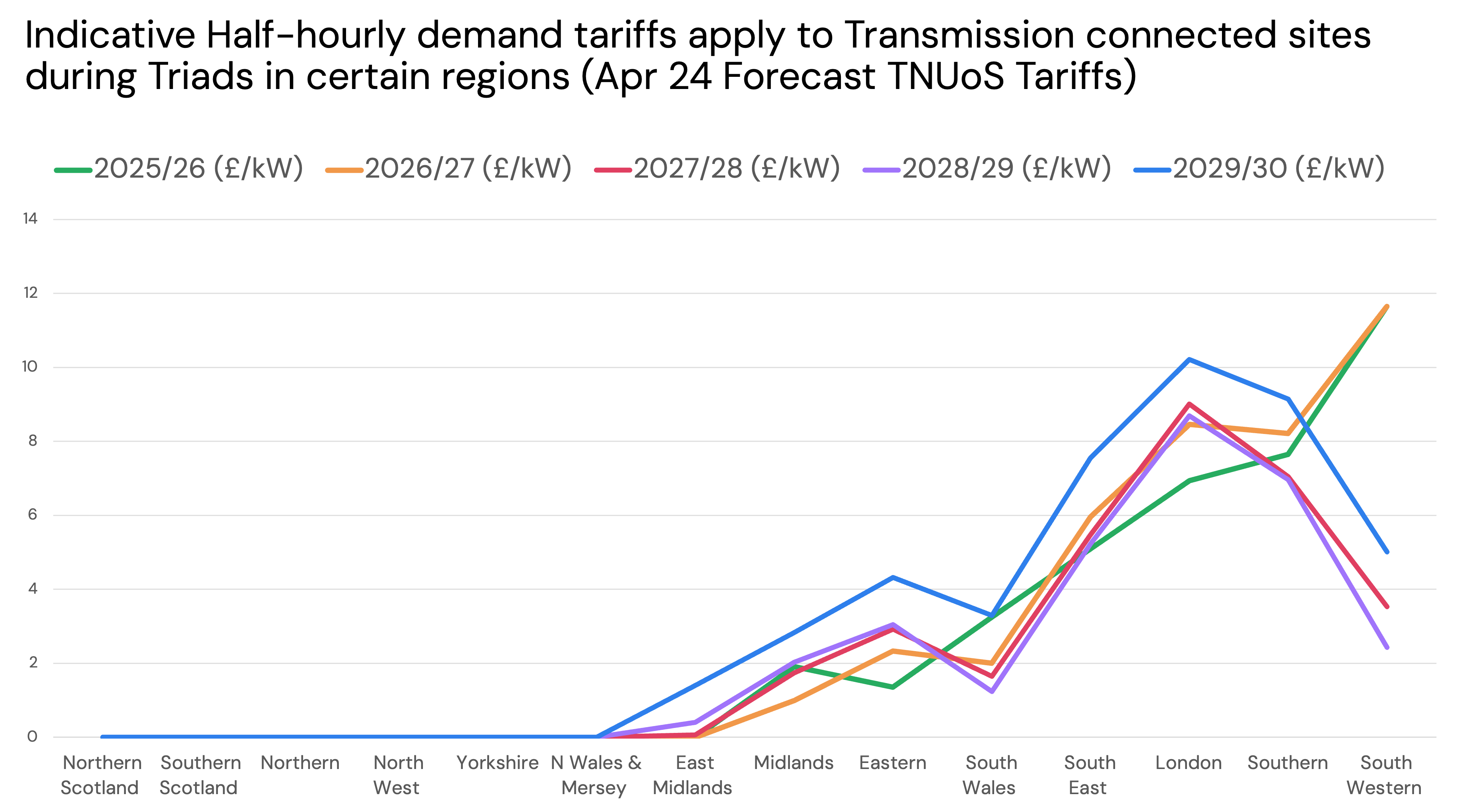Transmission Network Use of System (TNUoS)
TNUoS charges depend on the grid connection, asset size, and duration.
The TNUoS charging regime is slightly complicated for batteries. It depends on if the site is transmission- or distribution-connected, where it is, and what it does during Triad periods.
Generally, if you import during a Triad, you'll pay.
If you export during a Triad, you might get some revenue depending on where the site is, according to Embedded Export tariffs.
If the site is larger than 100MW or connected directly to the transmission network, you also face a fixed cost Wider Generation tariffs.
For reference, all costs (or revenues) we display in our forecast numbers are purely for the battery on a site. Batteries on co-located sites will be subject to different TNUoS revenues.
TNUoS Overview
Grid connection | Import (demand) | Export (generation) |
|---|---|---|
Distribution |
| Fixed cost: £0
|
|
|
Flexible (Triad) cost: £0 |
Batteries connected to the distribution network are exempt from TNUoS fixed import fees (provided they submit a Non-Final Demand form to NGESO).
All batteries (distribution or transmission) are exposed to flexible TNUoS charges if they import during a Triad, according to import rates (Figure 2 here). Distribution-connected assets get paid flexible TNUoS rates depending on where they are and their average power over Triad periods, according to Embedded Export Tariffs (shown below).
Transmission-connected assets are subject to fixed-cost TNUoS charges as per the Wider Generation tariffs. They can be positive or negative. Annual load factors are used in the calculation of these charges. For batteries without three years of historical data, the generic Annual Load Factor (ALF) is 1.63% (source).
Transmission-connected assets that import during triad periods will also be subject to Half Hourly Demand Tariffs.

More detail on these can be found in the subpages below.
Updated about 2 months ago